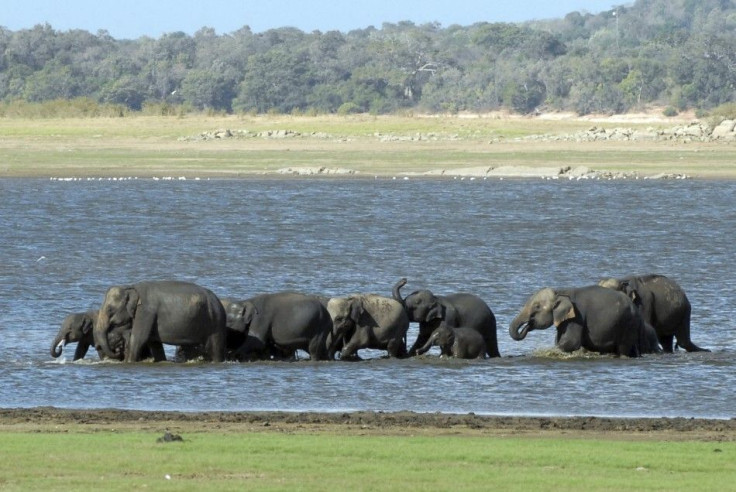Elephant Census Begins in Sri Lanka [PHOTOS]

Sri Lanka has launched a nation-wide census on the country's wild elephant population.
The census kicked off late Thursday evening at Minneriya National Park, home to several large families of elephants. More than a dozen national parks will be closed during the weekend survey.
Nearly 3,500 officials are involved in the census, covering approximately 1,500 waterholes, lakes and other areas where elephants commonly gather. The survey, mainly administered by the Department of Wildlife Conservation, will classify the animals by age and sex.
The census is being met with a boycott from some wildlife groups in the country, after Wildlife Minister S. M. Chandrasena confirmed that baby elephants capable of carrying caskets in religious pageants would be identified and "handed over" to temples, according to local news site ColomboPage.
Members of the Wildlife department have since denied these allegations and instead, have stressed the benefits of having the elephant census.
Results of the survey, expected to be released in a few weeks, may help minimize ongoing clashes between farmers and free-ranging wild elephants, a senior wild life official, RB Dissanayake, said in an interview with the BBC. The survey may also help re-map certain protected areas of the country.
The census, expected to run through Saturday, is being monitored by Sri Lankan military.
More about the elephant census:
The wild elephant population in Sri Lanka currently stands at about 6,000 elephants, according to the Department of Wildlife Conservation. The department estimates that approximately 12,000 elephants roamed the country during the early 1900s.
In addition to the Wildlife department, the census will be administered by specialists from India and the U.S.
The survey is being conducted during the country's peak drought period, a time when elephants are expected to visit the few remaining waterholes. The Wildlife department calls this the "water hole count."
Categories in the age classification used to identify elephants are calf, juvenile, sub adult and adult. The average adult elephant stands at more than 6 feet high.
© Copyright IBTimes 2025. All rights reserved.





















